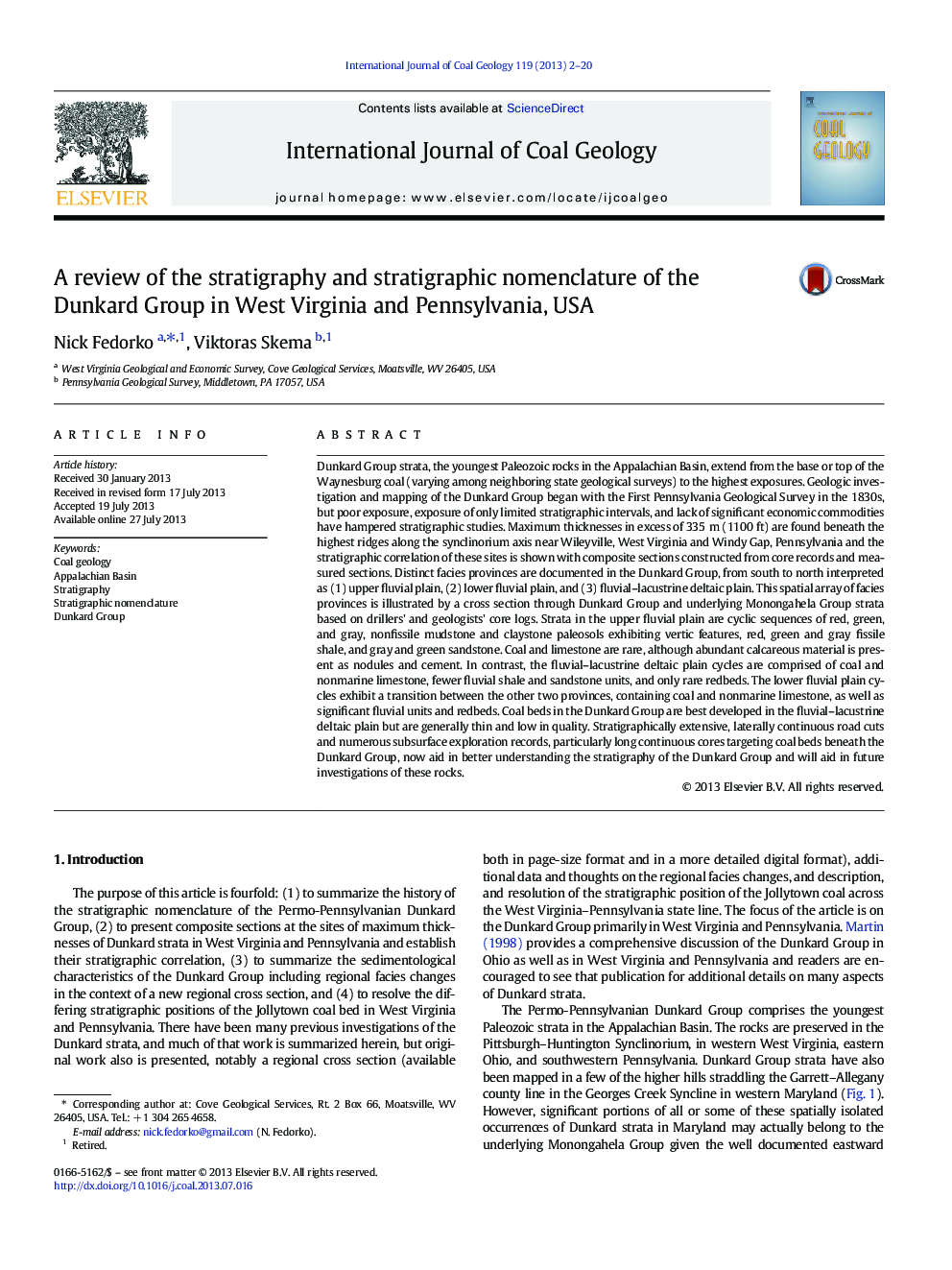| کد مقاله | کد نشریه | سال انتشار | مقاله انگلیسی | نسخه تمام متن |
|---|---|---|---|---|
| 1753183 | 1522577 | 2013 | 19 صفحه PDF | دانلود رایگان |
عنوان انگلیسی مقاله ISI
A review of the stratigraphy and stratigraphic nomenclature of the Dunkard Group in West Virginia and Pennsylvania, USA
دانلود مقاله + سفارش ترجمه
دانلود مقاله ISI انگلیسی
رایگان برای ایرانیان
کلمات کلیدی
موضوعات مرتبط
مهندسی و علوم پایه
علوم زمین و سیارات
زمین شناسی اقتصادی
پیش نمایش صفحه اول مقاله

چکیده انگلیسی
Dunkard Group strata, the youngest Paleozoic rocks in the Appalachian Basin, extend from the base or top of the Waynesburg coal (varying among neighboring state geological surveys) to the highest exposures. Geologic investigation and mapping of the Dunkard Group began with the First Pennsylvania Geological Survey in the 1830s, but poor exposure, exposure of only limited stratigraphic intervals, and lack of significant economic commodities have hampered stratigraphic studies. Maximum thicknesses in excess of 335Â m (1100Â ft) are found beneath the highest ridges along the synclinorium axis near Wileyville, West Virginia and Windy Gap, Pennsylvania and the stratigraphic correlation of these sites is shown with composite sections constructed from core records and measured sections. Distinct facies provinces are documented in the Dunkard Group, from south to north interpreted as (1) upper fluvial plain, (2) lower fluvial plain, and (3) fluvial-lacustrine deltaic plain. This spatial array of facies provinces is illustrated by a cross section through Dunkard Group and underlying Monongahela Group strata based on drillers' and geologists' core logs. Strata in the upper fluvial plain are cyclic sequences of red, green, and gray, nonfissile mudstone and claystone paleosols exhibiting vertic features, red, green and gray fissile shale, and gray and green sandstone. Coal and limestone are rare, although abundant calcareous material is present as nodules and cement. In contrast, the fluvial-lacustrine deltaic plain cycles are comprised of coal and nonmarine limestone, fewer fluvial shale and sandstone units, and only rare redbeds. The lower fluvial plain cycles exhibit a transition between the other two provinces, containing coal and nonmarine limestone, as well as significant fluvial units and redbeds. Coal beds in the Dunkard Group are best developed in the fluvial-lacustrine deltaic plain but are generally thin and low in quality. Stratigraphically extensive, laterally continuous road cuts and numerous subsurface exploration records, particularly long continuous cores targeting coal beds beneath the Dunkard Group, now aid in better understanding the stratigraphy of the Dunkard Group and will aid in future investigations of these rocks.
ناشر
Database: Elsevier - ScienceDirect (ساینس دایرکت)
Journal: International Journal of Coal Geology - Volume 119, 1 November 2013, Pages 2-20
Journal: International Journal of Coal Geology - Volume 119, 1 November 2013, Pages 2-20
نویسندگان
Nick Fedorko, Viktoras Skema,